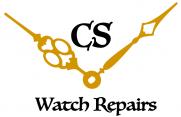How often should you service your watch?
How often should you service your watch?
Firstly, what do I refer to when I say a service? Let’s face it, if I simply get a cloth and clean the outside of your watch, return it to you and charge you, I’ve technically just provided you with a service. For specifics on servicing, please refer to one of the my other posts where I discuss this topic at a bit more length. However I will reiterate my meaning of servicing here: ” complete and thorough disassembly, inspection, and diagnosis of your timepiece with the intention to repair, restore and replenish the watches condition with its technical specifications and the customers parameters in mind.’
A watch will need servicing for a few reasons: a certain number of years have elapsed since its last service, it has suddenly stopped working or slowed down, it has been dropped or suffered a server impact, water has entered the watch, the glass has been broken/smashed, and a few others that are essentially a combination or variation of the aforementioned reasons. I will here elaborate on why these circumstances will lead you to need the watch to be serviced.
A few years have passed since the watch has been serviced.
To fully understand this reasons, one must understand the basics of a watch. The watch is a small mechanical device with intricate components that are defined to a 100th of a millimetre. That’s right – adjustments have to be made to 1/100th of a millimetres, and some components to even higher tolerances.
Like any mechanical device with moving components it suffers the consequences of temperature changes, magnetism, gravity, but most severely that of friction. Friction is one of the most hindering aspects of a watch. It causes components to wear out, become damage, deteriorate, and completely break. Friction has been one of the most hindering aspects of not just watches but all mechanical devices, which has driven large amounts of research and engineering to dry and resolve this issue.
Advancements have been made. In the early days, we saw steel pivots running on either brass or steel bearings. The use of firstly natural and then more commonly the use of synthetic jewels came into existence. This development was primarily made to combat friction and it has done a great job.
Other advancements have included developments in the types of lubricants used in watches from naturally based (animal fats) to the synthetic types nowadays. You’ll be surprised to know that a watch uses at least 5 different types of oils and greases. All of these have varying viscosity and roles to play in a watch. For example, some of the finer faster moving pivots will required oils with a lower viscosity to ensure the wheel turning on that pivot can move at the speed it needs to and without any hindrance.
The use of oils is the main reason watches need to be serviced.
Over time the oil between a pivot and a bearing starts to change in characteristic by either drying out or becoming thicker. Both of these changes begin to cause largely irreversible damage to a watch. This is because the amount of friction between two metals, or even a synthetic jewel and a piece of steel, is so high that pivot begins to become marked, wear out, thin out, warp, change, etc.
The car analogy.
Cars are commonly used as an analogy to watches. Although a car and a watch are very different, they both have a mechanical component that is impacted by friction and temperature. The difference with a car is that the movement of pistons within the engine block is a lot faster and produces larger amount of heat through friction.
Cars that have been run with either old or without any oil have been known the cease up. This is when the piston that is reciprocating inside the piston chamber has become so worn and hot that it literally melts with the chamber wall. The effects are not so drastic in a watch, however watches have been known to come to a complete stop not because of melting, but because a pivot is so deformed that it can no longer hold function in an upright manner and engage with surrounding wheels in a proper manner.
To combat friction, various lubricants are used in a watch from fine oils to thicker greases, and they all have a specific function and purpose (not to mention they’re quite expensive!). The largest supplier of horological oils is the Moebius lubricant company and you will find that most brands rely on this company for their lubrication needs.
The most common types of oils and greases you will find are 9010, HP1300, 8200, 8300, 941 and 9415. These will probably cover the basis for a simple manual watch with out any complications or fancy functions. However, you will find that oils such as 9010 with low viscosity and HP1300 with a slightly higher viscosity are used in most watches. 9010 is common for fine faster moving parts (such as the escapement), and HP1300 is used for slower moving wheels and even some setting and high friction areas.
Without using these oils in the correct location, the watch will not perform in the manner it should. Ever notice that car oils also come in different varieties such as 10W30? Watch oils function in the same way. If you were to use a different oil in a car (say for example 20W30) you wouldn’t destroy the car, but it would not function to its peak performance to start with, and it may suffer under high strain due to the lack of support from lubrication.
